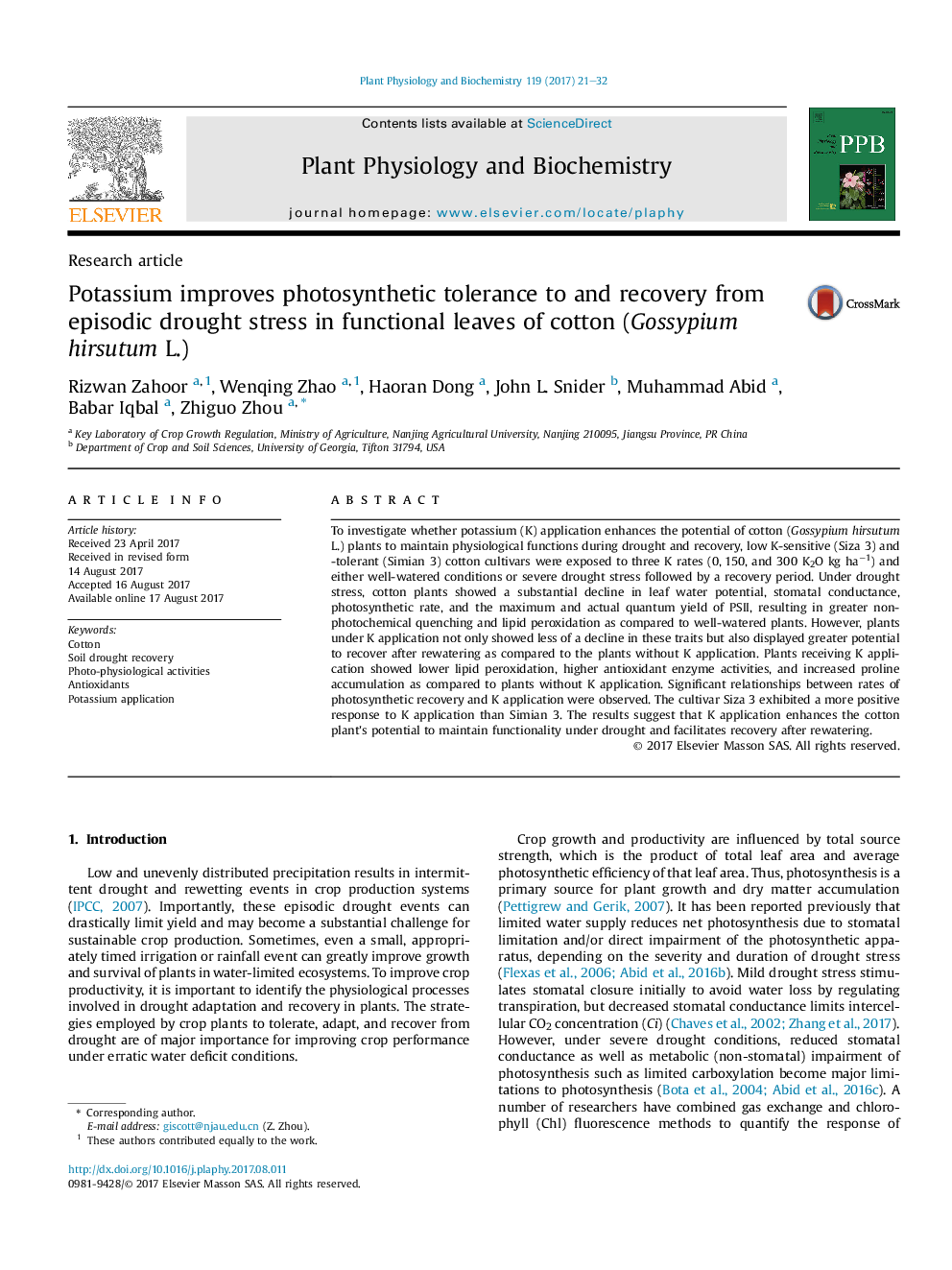| Article ID | Journal | Published Year | Pages | File Type |
|---|---|---|---|---|
| 5515287 | Plant Physiology and Biochemistry | 2017 | 12 Pages |
â¢Potassium regulated photosynthesis and efficiency of photosystem II during stress.â¢Potassium boosted drought recovery in cotton leaf photo-physiological activities.â¢Potassium improved antioxidants activities and proline content in stressed plants.â¢Low potassium sensitive cultivar performed better under higher potassium dose.
To investigate whether potassium (K) application enhances the potential of cotton (Gossypium hirsutum L.) plants to maintain physiological functions during drought and recovery, low K-sensitive (Siza 3) and -tolerant (Simian 3) cotton cultivars were exposed to three K rates (0, 150, and 300 K2O kg haâ1) and either well-watered conditions or severe drought stress followed by a recovery period. Under drought stress, cotton plants showed a substantial decline in leaf water potential, stomatal conductance, photosynthetic rate, and the maximum and actual quantum yield of PSII, resulting in greater non-photochemical quenching and lipid peroxidation as compared to well-watered plants. However, plants under K application not only showed less of a decline in these traits but also displayed greater potential to recover after rewatering as compared to the plants without K application. Plants receiving K application showed lower lipid peroxidation, higher antioxidant enzyme activities, and increased proline accumulation as compared to plants without K application. Significant relationships between rates of photosynthetic recovery and K application were observed. The cultivar Siza 3 exhibited a more positive response to K application than Simian 3. The results suggest that K application enhances the cotton plant's potential to maintain functionality under drought and facilitates recovery after rewatering.
